Spider Man Full Body Realistic Black and White Drawing
Tutorial realized by ARTUNIVERSE (Antoine Dacheville)
How-do-you-do, we will discover in this new photograph tutorial how to make a Spiderman drawing in the realistic style. This tutorial is related to the previous one, concerning the grayness gradient with the GRAPHIT Brush range. And so don't hesitate to have a look at information technology beforehand.
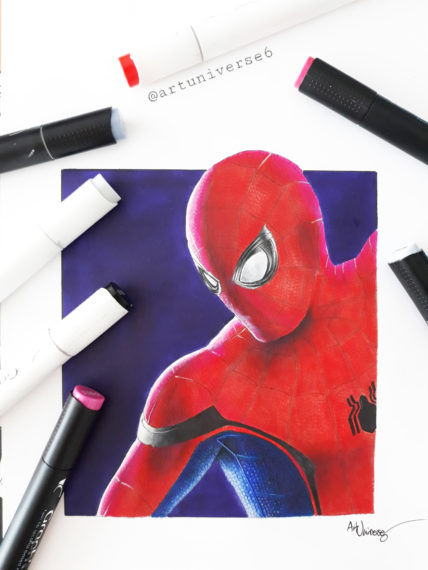
Realistic drawing is what I prefer to work on. Not only because it takes a lot of time but likewise because it is a drawing style that requires a lot of techniques. We volition detail them in a progressive way throughout this tutorial. To your markers!
The first thing to do is to utilise a pencil. I use a 0.5mm steel criterium to simply contour my Spiderman. I imagine my face, the posture of the arms and body. I take intendance to have a light trace so that I tin erase without difficulty if necessary. I likewise trace the positioning of the eyes. Take your time to do the pencil. This is a very of import step earlier starting inking and coloring.
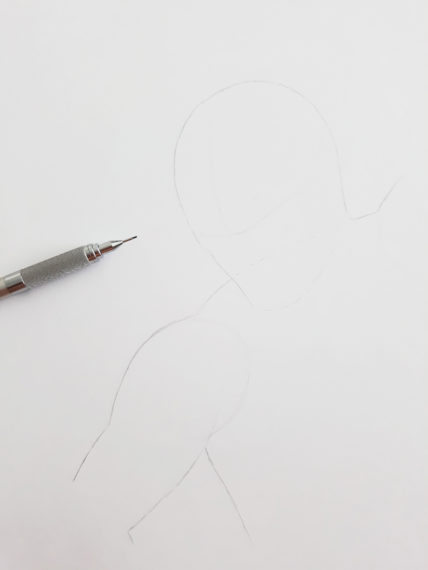
Once I know pretty much how my Spidey is going to exist, I make a showtime sketch of the eyes. Again, I utilise a low-cal layout because I know I volition have to piece of work on this expanse later.
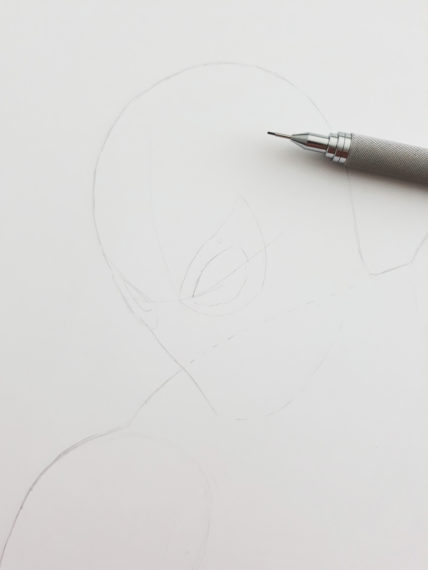
I also decide (as usual), to make a frame around the character. There are several reasons for this option: one- I hands ascertain the area to color, 2- information technology allows me to make a groundwork and dress my drawing, 3- making a background allows me to highlight the white of the drawing and thus to appear more real.
TIP: To make a frame that does not "shell" your character, highlight areas like Spiderman's head protruding from the background. It also gives perspective.
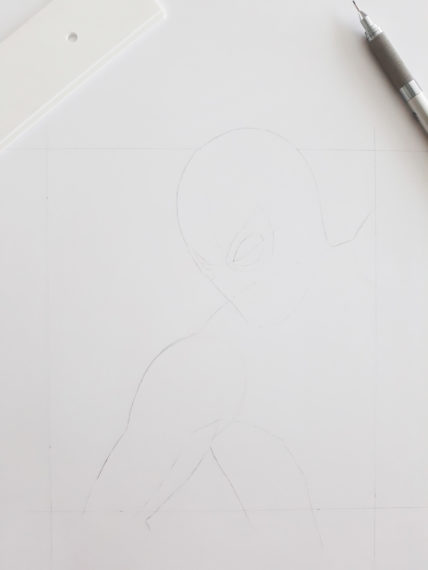
And then we can first working on the first details of the costume. I starting time with the optics, which in the moving-picture show are expressive and tin move. Information technology is therefore necessary to mark this "technology" with features like this. We will give it some relief later.
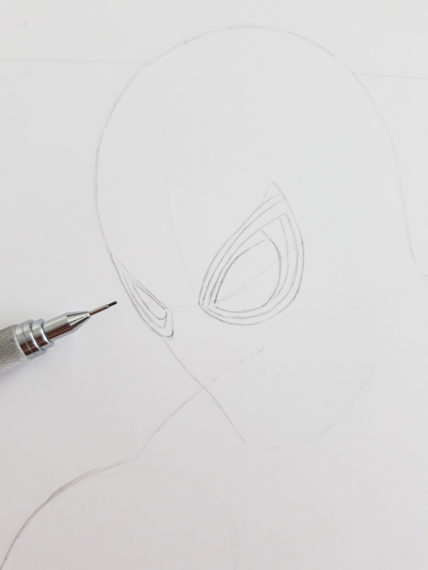
Now comes the nearly fragile pace of the pencil: to make the features of the costume. They must not be straight because information technology is necessary to give an impression of volume. And then make a first line and then move frontwards gradually until you lot have finished the vertical lines. Once that is done, we tin can do the horizontal ones.
NOTE: What differentiates Spiderman Homecoming's costume from others (Spiderman of 2002, The Amazing Spiderman…) is that the horizontal lines are more spaced from each other. So recall non to desire to do also much. The ideal is to stay in what is called "authentic", i.e. equally shut equally possible to the version of the moving picture.
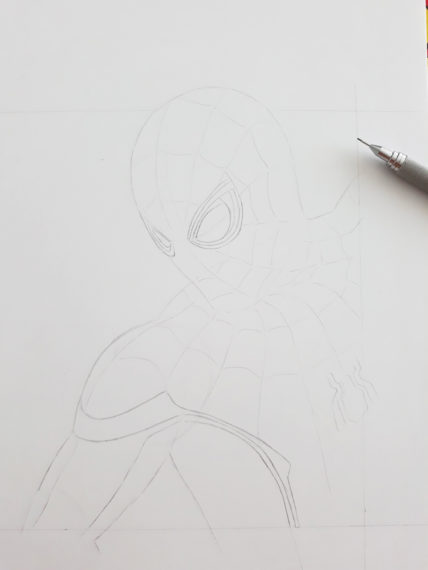
Still to remain true-blue to the film, it is then necessary to separate the vertical lines, like this.
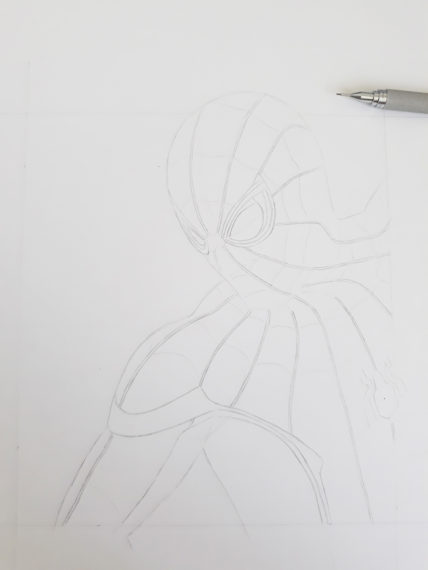
You can then go back by pushing a little more on the horizontal lines.
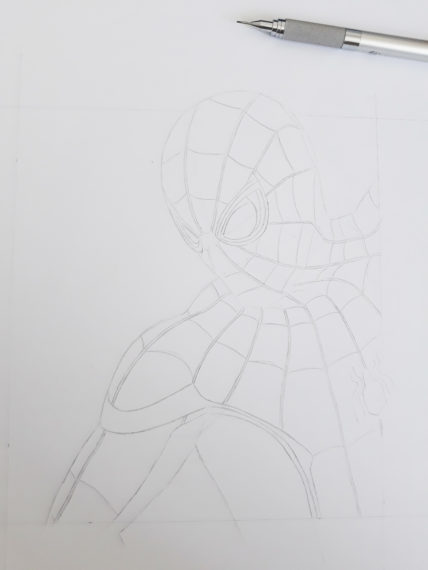
We volition now piece of work on the background. I chose to color my groundwork with a dark purple 6180 with a marker from the MARKERS range. This choice of marker is explained by its rectangular tip which volition facilitate my passage around the frame of my bottom. So I volition take a straight line.
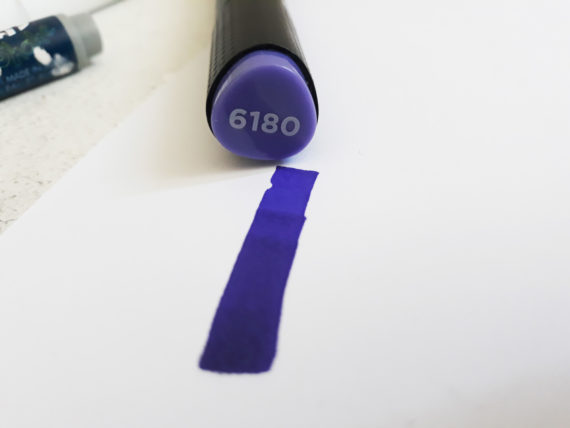
I start by inking only the outside of my Spiderman and the outline of my background, in club to delimit my area to color.
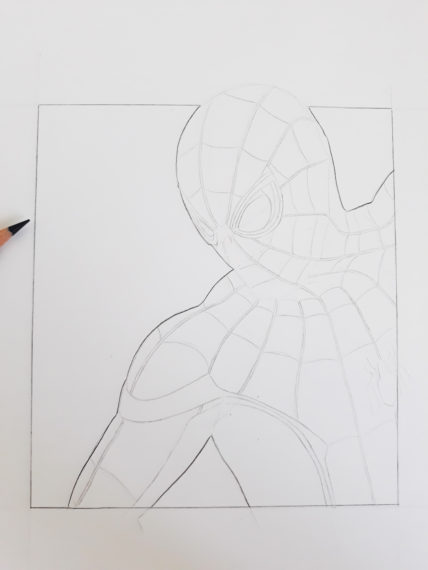
Then I colour by taking care not to overtake on our character. Have a confident line and take your time.
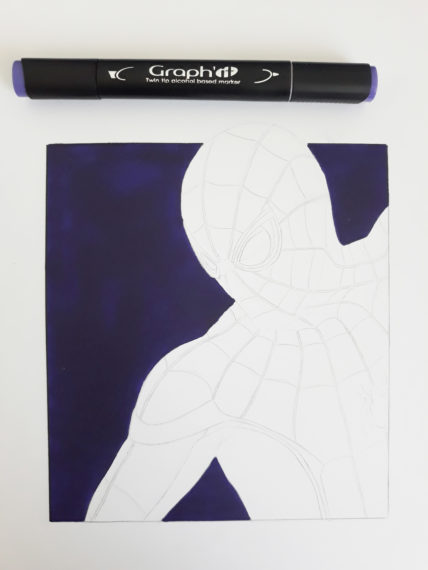
So I can really attack the Spiderman. I start with the eyes by simply inking the lines of my pencil.
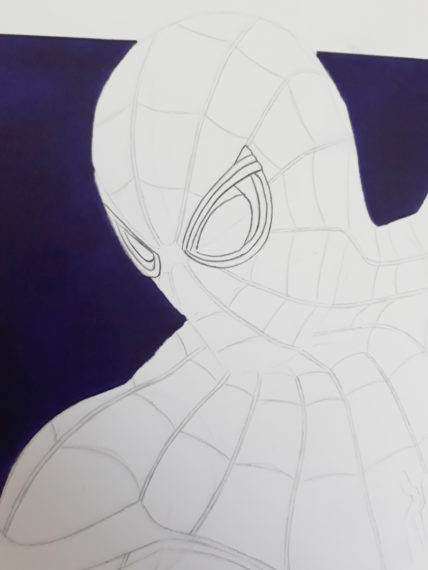
I volition color my eyes with the Neutral Grey Castor range in order to have an extra fine tip for brusk shades.
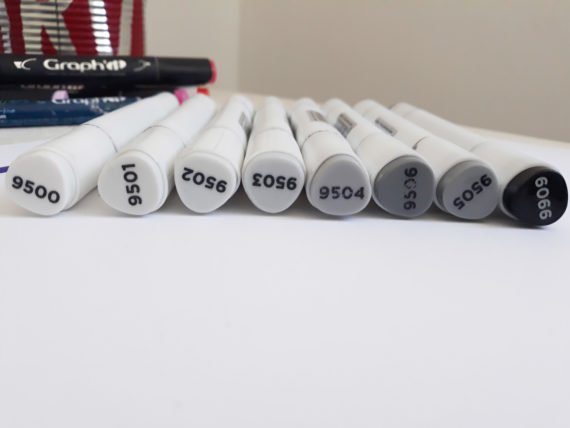
Every bit for the tutorial on gradient in grey tone http://www.graphit-marker.com/blog/tutoriel-degrade-de-gris/, I start with the darkest expanse and go to the lightest area. I use the extra fine tip throughout the process.
Once I take a visual of my gradient, I go further with the black.
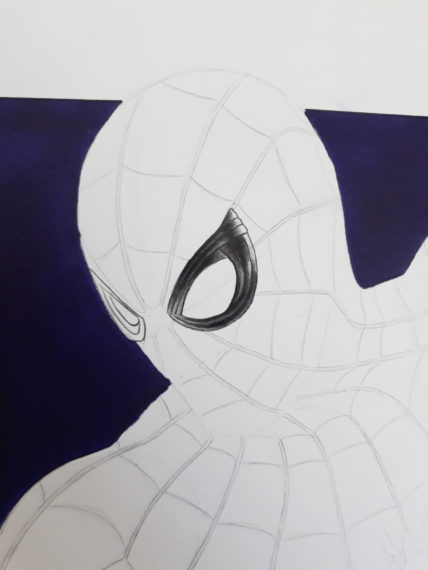
I end upwards giving relief by passing slightly with a white GRAPH'Information technology Shake 0.7mm.
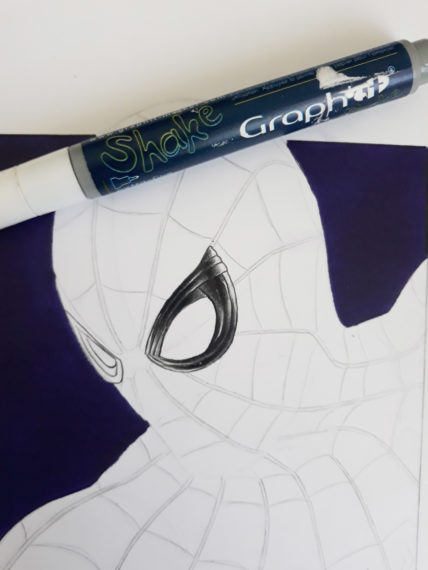
Finally, I too colour the inside of the eyes with the brush tip using the 9500, 9501 and 9502. I keep in mind my contrast zone to be consistent with the play of light. I exercise the same for the correct eye.
So information technology'south fourth dimension to movement on to the costume. I start by inking my "spider web" features of the costume.
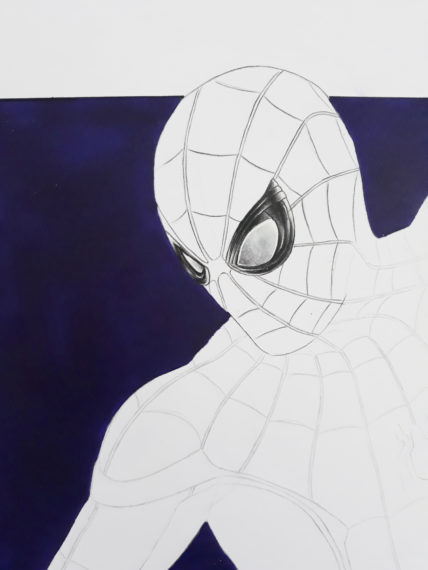
I apply the aforementioned "rule" for my grayscale.
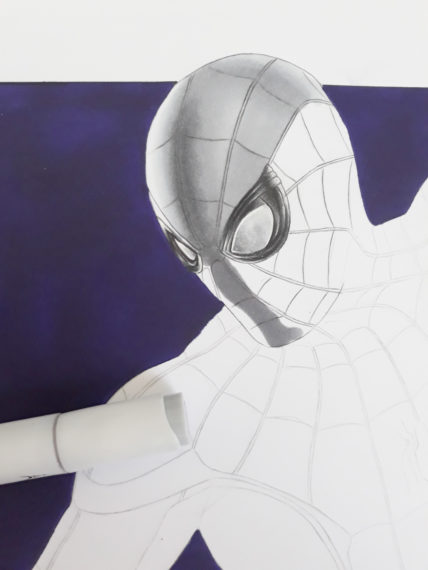
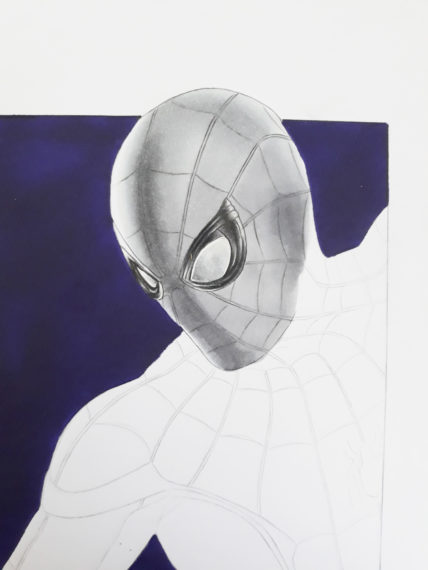
I will use 4 markers to get a pink relief by grading from carmine to pinkish.
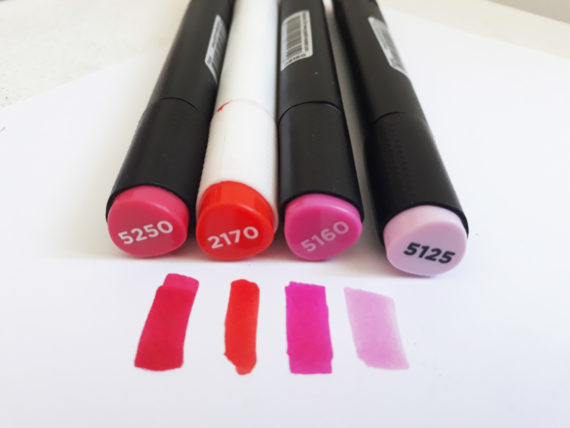
Of course, you can practise without reflection and in this case use just 5250 and 2170.
I associate the 5250 with the darkest areas, and the 2170 with the lightest areas. Here is an example on the top of the mask:
To make the pinkish reflection, I go dorsum to the outermost corner of the mask with get-go the 5160 and and then the 5125.
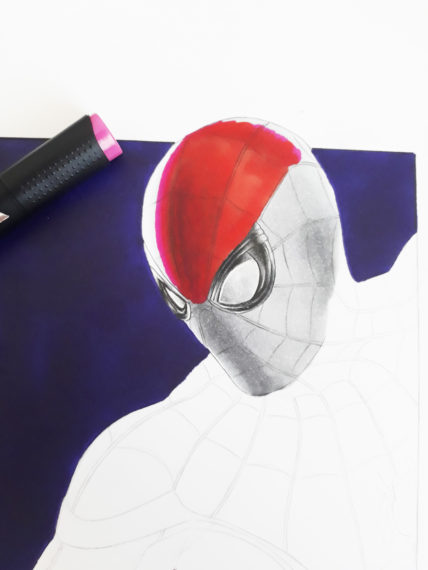
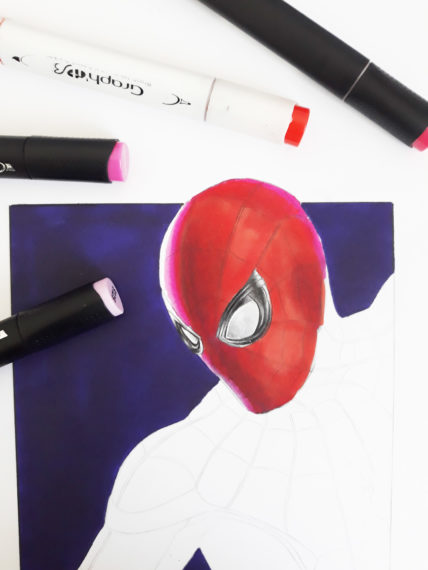
In this last picture, you can come across that I voluntarily leave a white expanse on the mask. We find here our play of lite with a gradient going upwardly to white through a pink reflection. I'll do the same thing on the whole correct side of Spiderman.
Let'southward get down to details! To give texture to this costume design (Homecoming fashion), I choose to make small, tight circles using a red BIC. Here'due south the idea:
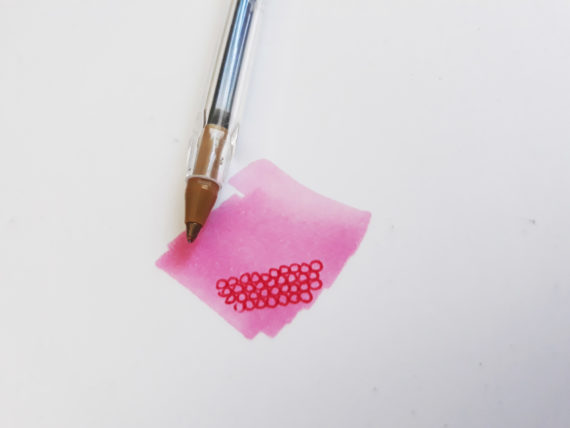
This is a very long only very important step, especially to obtain a realistic rendering. I do these details on the mask and as well on the whole costume so… to your pens! This is the rendering:
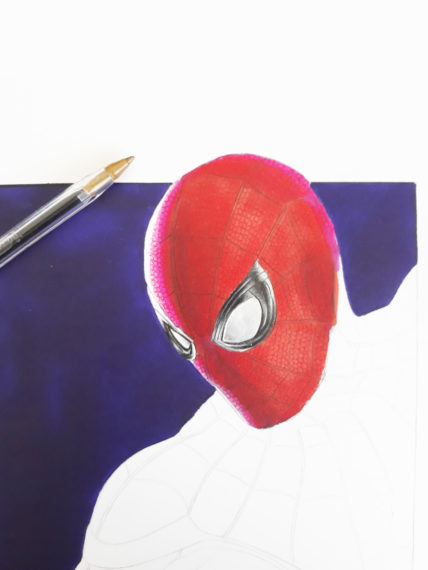
Then, I complete the shades of my mask past adding a little more grey over red and also an addition of white with the 0.7mm SHAKE.
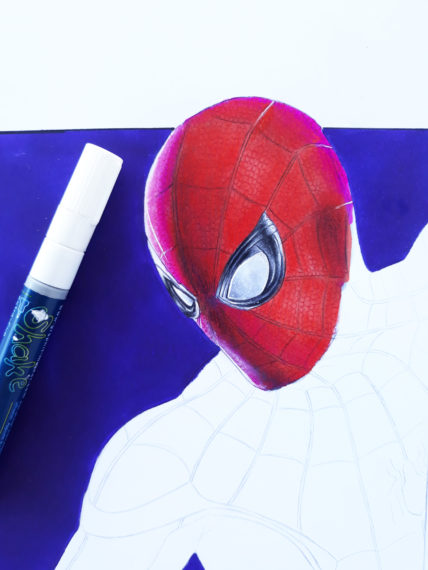
Notation: Recollect that white is crucial for your drawing to be realistic. That'southward why I like to brand important contrasts, peculiarly on Spiderman's right side.
I'one thousand taking dorsum everything nosotros did before with the suit.
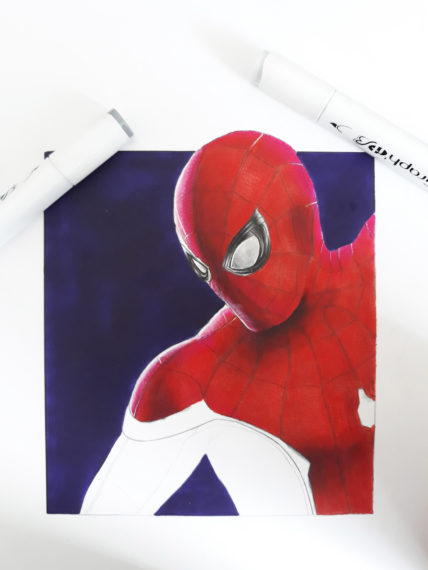
I likewise do the aforementioned blackness/gray gradient technique as for the eyes with the black parts of the suit, equally here with the black function of the shoulder.
We can move on to the concluding function with the blue part of the suit. Here are the markers I will use:
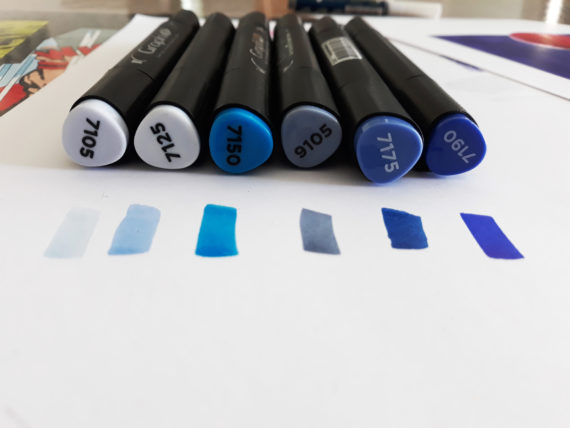
I start by coloring a first base at 7150.
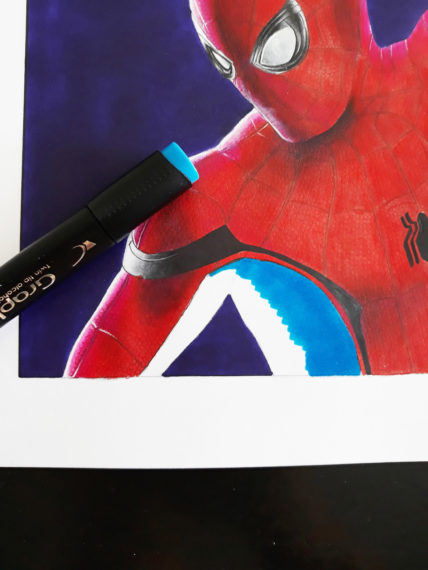
Then I complete with the 7125 and 7105.
I and so have back the whole of my gradient using the same markers just leaving with a darker marker, the 7175.
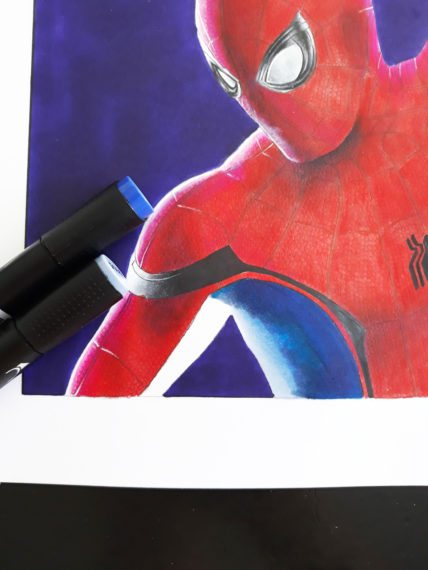
I colour until I get a good mix of colours among them.
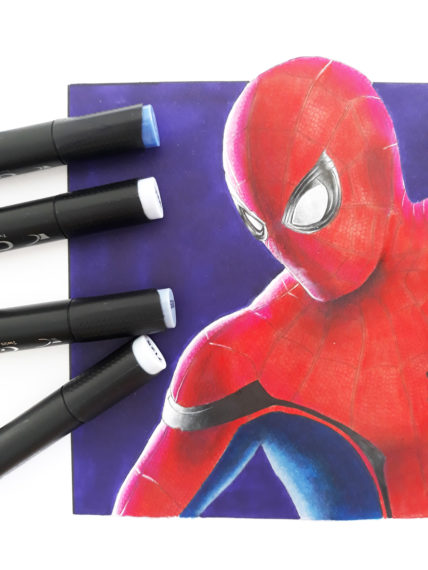
Then, I apply the same type of details as for the red function, i.e. with circles only with the blue BIC this time.
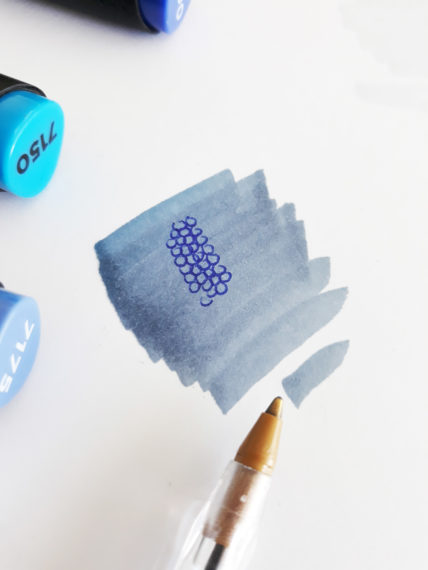
Finally, I add white details with the SHAKE.
TIP: You tin tap with your finger in one case you have made a bespeak with the white SHAKE. It will blur the white and alloy it into the blue.
Here is the final flick of my cartoon of Spiderman:
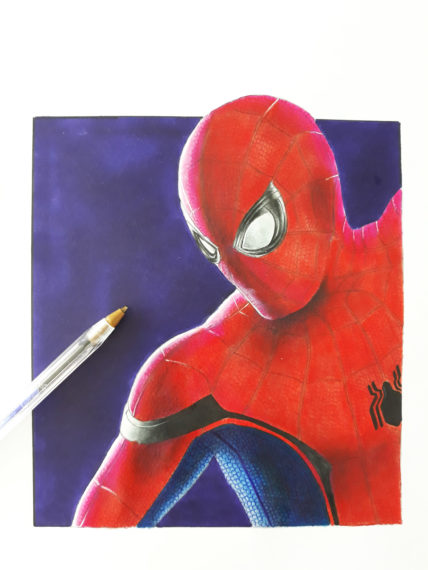
It took me almost 10 hours to practise it, on A4 Bristol paper.
We have therefore seen through this tutorial dissimilar techniques to create relief, depth and textures for a realistic upshot. I illustrated the realistic drawing with Spiderman merely each character has a different technique, because the costumes are not the same (different details, textures…) but concerning the colour gradient y'all will always find the same base.
Here is some other work, done with the same techniques as above, on a 50x65cm format with 36 hours of cartoon.
Good luck with your cartoon!
Source: http://www.graphit-marker.com/blog-en/technical-tutorial-7-how-to-draw-a-realistic-spiderman/
0 Response to "Spider Man Full Body Realistic Black and White Drawing"
Post a Comment